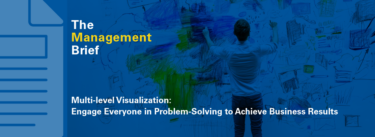In Michael Mann’s fabulous film Last of the Mohicans, the Mohican chief Chingachgook carries a gunstock war club – the weapon with which he defeats the film’s villain, Magua. It’s a wooden club topped with a curving, narrow-edged head designed to look like a gunstock.
The origins of the weapon are mysterious, but it was largely used from the late 17th to mid-19th century, first by Eastern woodland tribes and then spreading across the Northern plains. In all likelihood the weapon evolved as a response to the muskets of the time. Indian fighters were quick to adopt muskets, but lacked the technology to produce or maintain them, although they found other uses for faulty ones – and, likely, used the basic design to create a new weapon.
When faced with a new, superior technology, a very human response is to try to copy it and, if the core technology is not available, create a new form by pushing the existing technology to its limits. The irony of it is that:
- The new tool, in this case the gunstock club, is likely to be more effective than similar tech tools (traditional war clubs);
- BUT it doesn’t hold an advantage over new technology (say, muskets).
Why the historical detour? I believe we’re witnessing the same process at work with lean, in which rather than investing the time it takes to learn lean, many people simply try to create a lean-like environment. I feel that:
- Toyota has invented and perfected a more effective method to compete in the unpredictable, domineering and harsh environment of the automotive industry by inventing a radical new way to think about work, one that breaks with the Taylorist and Fordist traditions.
- Few executives deny Toyota’s enduring success and contributions; however many lack the core understanding of how Toyota does it. Thus they invent their own version of “lean” that allows them to pursue Toyota-like characteristics without changing their basic work habits, practices and attitudes.
For their own reasons (mostly, I believe, the need to involve their suppliers in their just-in-time supply chain), Toyota executives have kindly explained their method again and again, emphasizing:
- Kaizen: before anything else, results come from the dynamic of small-step improvements towards more complete customer satisfaction.
- The Toyota Production System: the full system framework to understand how to create the workplace conditions for kaizen.
- The Toyota Way: the managerial values needed to support and grow the TPS workplace conditions, leading from kaizen to innovation.
These basic elements of Toyota’s new organizational technology are well published – the only barrier to entry is that lack of good teachers. However the same can probably be said of any new technology: You’ve got to make an effort to learn this stuff.
Twenty-five years after the industrial world acknowledged Toyota was doing something really different that worked better, questions asked tend to be the same as they always were:
- How can Toyota’s methods apply to my company and my industry? The answer is: They probably don’t.
- Can’t we think of an easy way to get started with “lean” without having to learn Toyota’s specific approach? The answer is: Yes, certainly.
- Shouldn’t we start thinking beyond Toyota? It’s been 25 years now, can’t we come up with a better mousetrap? The answer is: Absolutely, go ahead.
There are an infinite number of ways to invent a gunstock war club – you’ll probably come up with something fascinating in its own right, but that won’t make you learn the basic principles of the new technology.
This is what it’s really about. Not “Can we do something? Anything?” Of course we can, we’re equally smart and motivated. Personally I was very involved with Systems Thinking for many years and still can’t help finding it more esthetically pleasing (read: easier to intuit) than TPS. But we need to accept that with these various attempts we are also avoiding the discipline of learning – the hard work of acquiring knowledge by confronting theory with specific situations case-by-case, time-and-time again until we finally understand.
“Lean” in my mind is a generic term that covers all the various attempts at responding to Toyota’s TPS challenge. Some attempts are deliberately close to the source and often spectacularly successful, as described in Jacob Stoller’s The Lean CEO. Others such as Lean Six Sigma, Lean Startup and so on, are very far from the core teachings – interesting in their own right, absolutely, but not progressing our understanding of the Toyota’s new organizational technology.
Lean is not a religion. There is no moral “orthodoxy.” Every experiment and attempt at trying something new is interesting and worthwhile on its own merits. But I believe we need to understand what we’re doing. Are we:
- Trying to become lean by thinking about how general lean principles apply to our business and re-engineering accordingly?
- Trying to understand Toyota’s organizational tech by experimenting with it rigorously in specific work processes to better understand it before we apply it large-scale?
These two paths lead to very, very different outcomes and although I do believe each experiment is interesting, I also think that in a competitive world, some experiments are more adaptive than others: gunstock clubs will give you an edge against other clubs, but won’t help much against muskets, and that’s that. Using muskets, however, requires learning about powder, forging, milling, crafting, etc. In a lean sense, switching to lean requires understanding takt time, continuous flow, pull systems, andon, stop at defect, separate machine work and human work, etc.
I don’t believe in shortcuts to the discipline of learning (although I do believe one can get lucky, thankfully!). Many of the questions and debates in the lean world are in fact expressions of the difficulty of learning a new technology. Yes, it’s hard. But it’s also fun, exciting, and rewarding as we resolve so many problems that were previously thought completely intractable.
I have to confess that it took me seven years to finally commit to learning TPS in earnest. Seven years of being interested in it, studying it, and hearing about this and that effort; but always seeking a simpler way around the problem (I even wrote a terribly bad book about it before changing my mind completely and starting work on The Gold Mine). Hopefully I can try to convince others to jump in faster than I did. Chemistry is not alchemy and the faster you learn the theory and how to conduct proper experiments, the quicker you’ll get visible results and discover progressively how to transform your business, and maybe, why not, transform your industry.






